I'm trying to aggregate (Sum and Average) over groups of quarters, but I'm getting different results depending on which method I use. I'd like to understand why.
The following basic query illustrates my data (Pentaho SteelWheels sample):
SELECT {Measures.Sales, Measures.Quantity} ON COLUMNS
, ORDER(
Time.Quarters.Members,
Time.CurrentMember.Caption,
BASC
) ON ROWS
FROM SteelWheelsSales
The result:
Time | Sales |Quantity
-----+------------+---------
QTR1 | 445094.69 | 4561
QTR1 | 877418.97 | 8694
QTR1 | 1111260.1 | 10995
QTR2 | 564842.02 | 5695
QTR2 | 847713.97 | 8443
QTR2 | 869565.24 | 8480
QTR3 | 687268.87 | 6629
QTR3 | 1145308.08 | 11311
QTR4 | 1980178.42 | 19554
QTR4 | 2117298.82 | 20969
So the row headers are captions for the quarters and the different occurrences of QTR1, QTR2, QTR3 and QTR4 each belong to a particular year (So the 1st QTR1 is actually [2003].[QTR1], the 2nd is [2004].[QTR1] and the 3rd is [2005].[QTR1], and so on)
What I'd like to have is a result that treats all occurences of [QTR1] as a single group, and where the cell values aggregate the Sales Quantity measure. Let's say I want to see at least the sum (total quantity for all quarters 1, 2, 3 and 4 regardless of years) and the average (average quantity over all quarters 1, 2, 3, and 4 regardless of years)
Now, I saw this question:
How can I merge two members into one in a query?
And while that solution does help it requires that I enumerate the quarters that I need to group together. I would like to do that dynamically.
I came up with this query:
WITH
SET OrderedQuarters
AS Order(
Time.Quarters.Members,
Time.CurrentMember.Caption,
BASC
)
SET UniqueQuarters
AS Filter(
OrderedQuarters,
OrderedQuarters.Item(
OrderedQuarters.CurrentOrdinal-1
).Caption <> Time.CurrentMember.Caption
)
MEMBER Measures.QuantitySum
AS Sum(
Filter(
OrderedQuarters,
UniqueQuarters.Item(
UniqueQuarters.CurrentOrdinal
).Caption = Time.CurrentMember.Caption
)
, Measures.Quantity
)
MEMBER Measures.Counter
AS Count(
Filter(
OrderedQuarters,
UniqueQuarters.Item(
UniqueQuarters.CurrentOrdinal
).Caption = Time.CurrentMember.Caption
)
)
MEMBER Measures.[Sum over Count]
AS Measures.QuantitySum / Measures.Counter
MEMBER Measures.AvgQuantity
AS Avg(
Filter(
OrderedQuarters,
UniqueQuarters.Item(
UniqueQuarters.CurrentOrdinal
).Caption = Time.CurrentMember.Caption
)
, Measures.Quantity
)
SELECT {Measures.QuantitySum
,Measures.Counter
,Measures.[Sum over Count]
,Measures.AvgQuantity} ON COLUMNS
, UniqueQuarters ON ROWS
FROM SteelWheelsSales
Which gives this result:
Time | QuantitySum | Counter | Sum over Count | AvgQuantity
-----+-------------+---------+------------------+----------------
QTR1 | 24250 | 3 | 8083 3333333333 | 8083.3333333333
QTR2 | 22618 | 3 | 7539.3333333333 | 8083.3333333333
QTR3 | 17940 | 2 | 8970 | 8083.3333333333
QTR4 | 40523 | 2 | 20261.5 | 8083.3333333333
Now, while the [QuantitySum] and [Sum over Count] measures give me the result I want, I'm not entirely satisfied:
- The [QuantitySum] is explicitly calculated with Sum. I would like have it implicitly calculated, since it is already defined in the cube as a sum aggregated measure
- I'm explictly calculating the average in the [Sum over Count] calculated measure. I would like to use Avg() and I tried with Measures.AvgQuantity, but that doesn't seem to behave in the way I expect. It looks like it caculates the average for Q1, and then it repeats that value for the other quarters as well. Why? Sum and Count seem to work exactly as intended, why is Avg so different?




